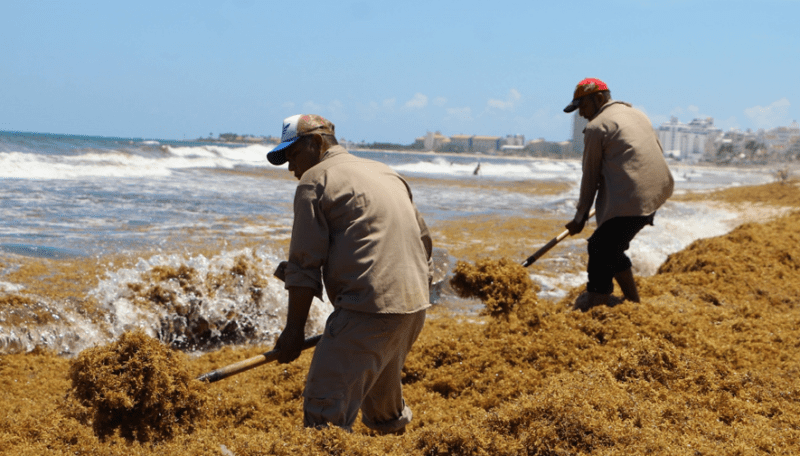Since 2004, Internews’ Earth Journalism Network has given journalists around the world vital skills and opportunities to improve environmental news coverage in communities highly affected by climate and environmental change.
As we mark Earth Day, we highlight a cross-border investigation into the “brown tide” of algae threatening the Amazon and Caribbean, the important links zoonotic diseases play between public health and the environment, the public policy impacts we’ve documented as a result of our work, and new opportunities for environmental reporters in India and Latin America.
‘Murky Waters’ Series Links Amazon Pollution to the Largest Belt of Algae on the Planet
In a special cross-border report, journalists, remote sensing experts, and editors from Brazil, Mexico, Guatemala and the US, supported by Internews’ Earth Journalism Network, worked together to study a swelling “brown tide” of sargassum that has been increasingly fouling beaches in the Caribbean over the last decade.
Their year-long investigation into the sources of growing pollution in the Amazon basin and the economic and ecological impacts in the Caribbean combined into a compelling four-part series.
Published by journalists working at NOLA.com in New Orleans, InfoAmazonia in Brazil, and Aristegui Noticias in Mexico, the series uncovers the latest science on the algae bloom, what is causing it and what can be done about it.
“This is a classic case of journalists with environmental and climate expertise ‘connecting the dots’ to reveal a massive story that had gone largely untold,” says James Fahn, Executive Director of Internews’ Earth Journalism Network. “The synergy of journalists working across borders and specializations enabled our team to report on the entrenched causes of this pollution and how it’s affecting not just local communities but an entire region thousands of miles away.”
This isn’t the only story shaping policy and perceptions of environmental change. Explore the impact of stories produced by Earth Journalism Network’s members and grantees, including policy changes on heatwaves in Pakistan, and protection of Giant Pandas in China.
Zoonotic Diseases and How to Cover Them
The spillover of dangerous pathogens from animals to humans has become a hot topic over the last year due to the COVID-19 pandemic.
Watch an Earth Journalism Network webinar to learn about the new online course on zoonotic diseases just launched for journalists, and hear from premier experts in the field of “One Health,” a multi-sector discipline recognizing the interconnection between people, animals, plants, and their shared environment.
What We’re Reading
This story from New Humanitarian looks at how women and girls often bear the brunt of the fallout from natural disasters. It’s a topic the Earth Journalism Network often discusses with reporters, revealing the intersections between climate change, human rights, economics, and health. While this piece shares the experiences of women in Guatemala, many other disaster-prone countries are facing similar challenges.
One More Thing
Want more of these resources, opportunities, and insights into environmental journalism? Join the Earth Journalism Network to become a part of a growing network of 13,000+ members around the world, giving you access to reporters, editors, mentors and others focused on environmental news and information.
Current opportunities include story grants for reporting on renewable energy in India, and environmental policy in Latin America.
Membership is open to working journalists and is free – sign up!
